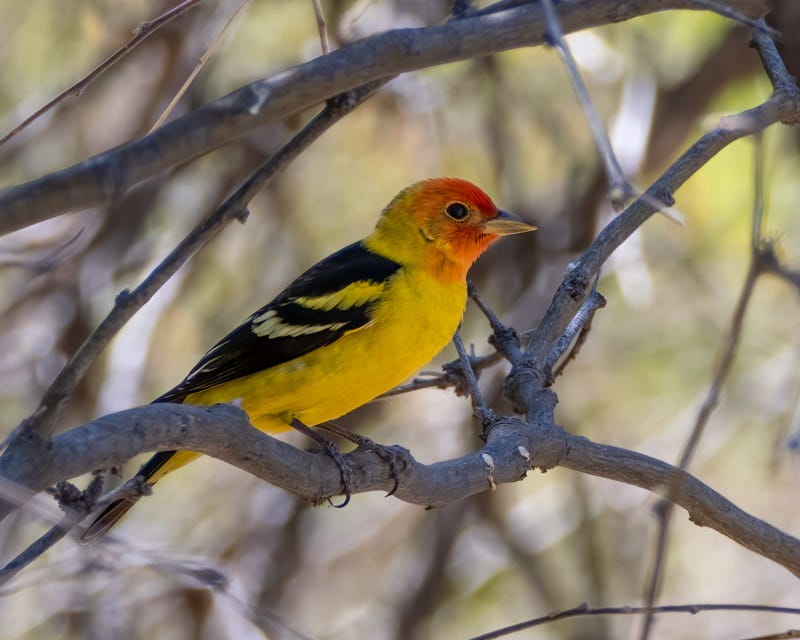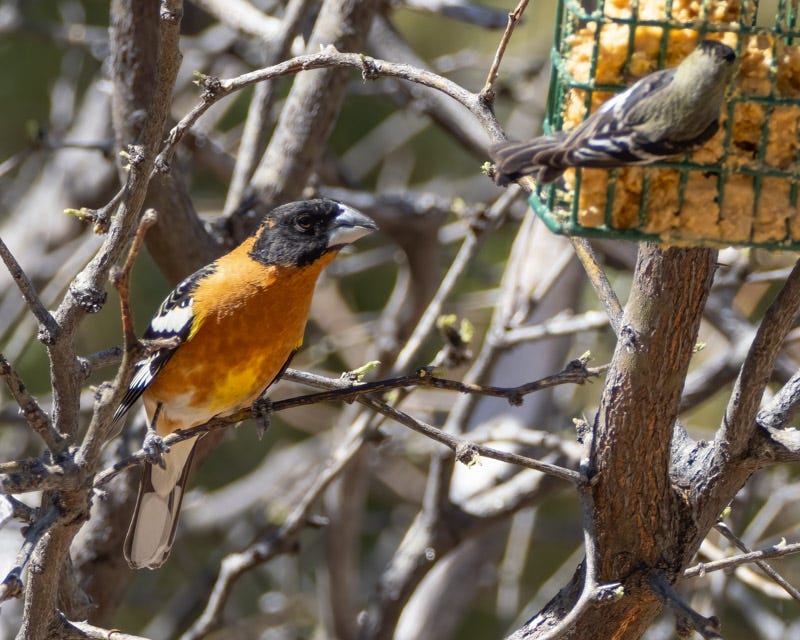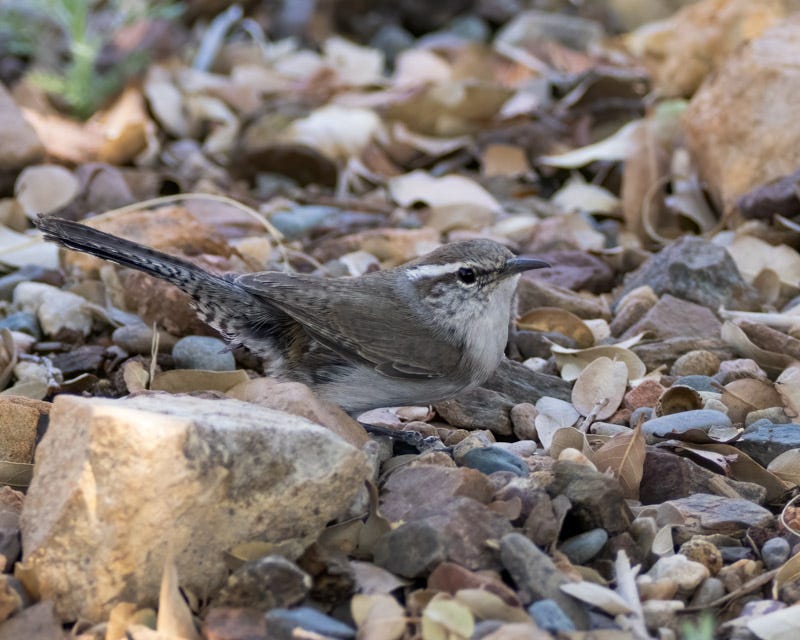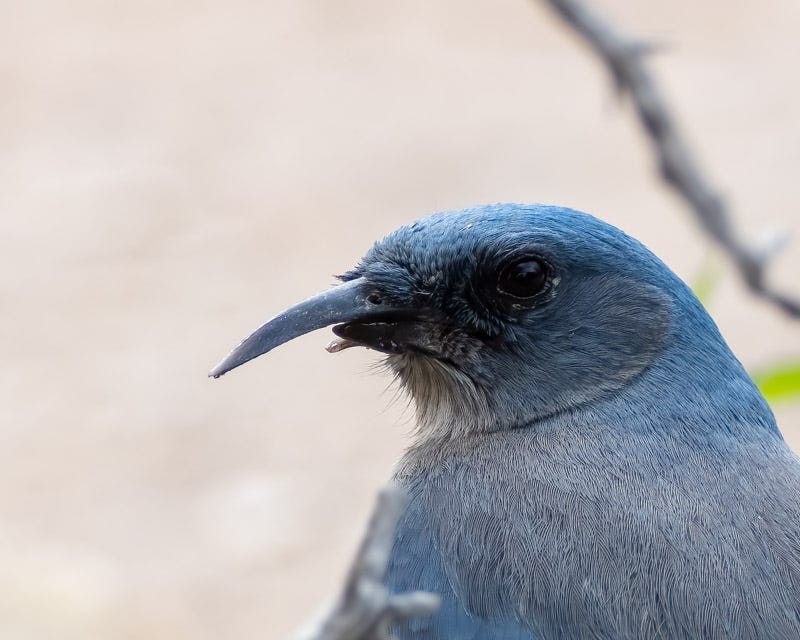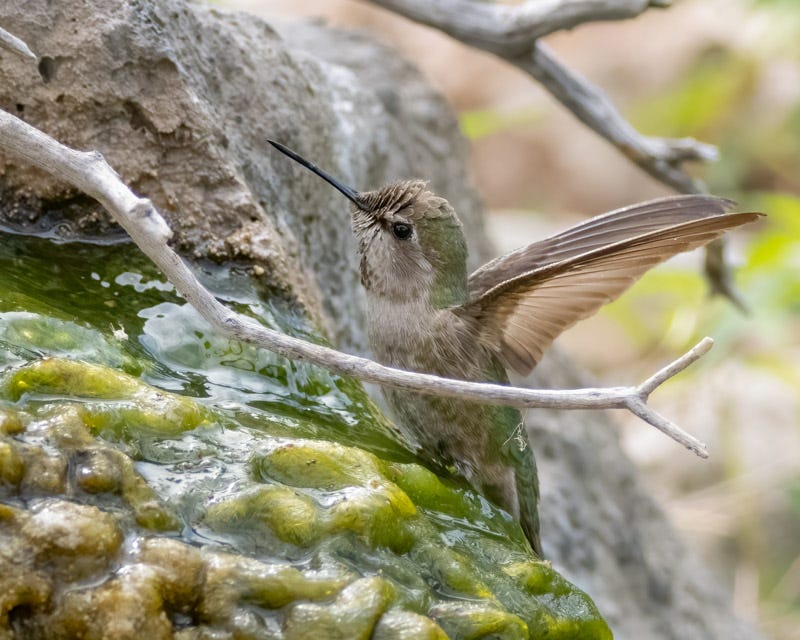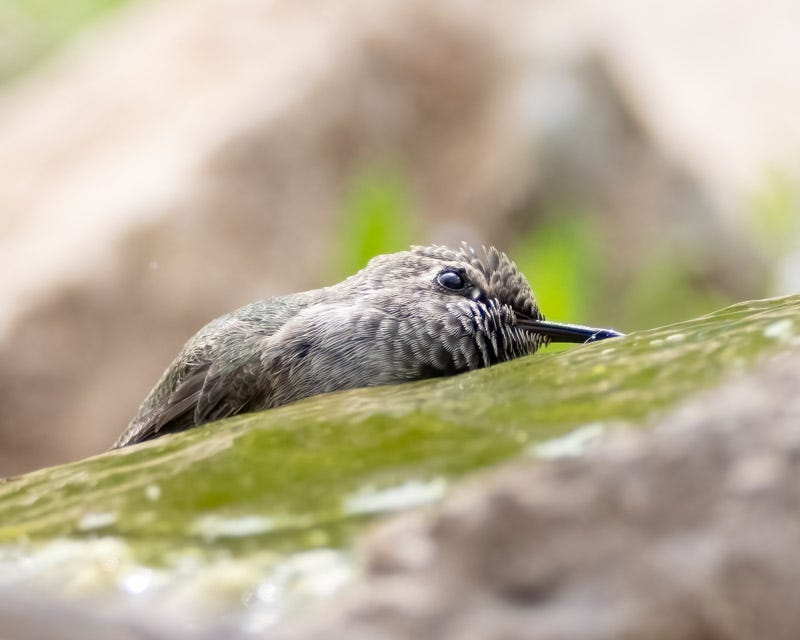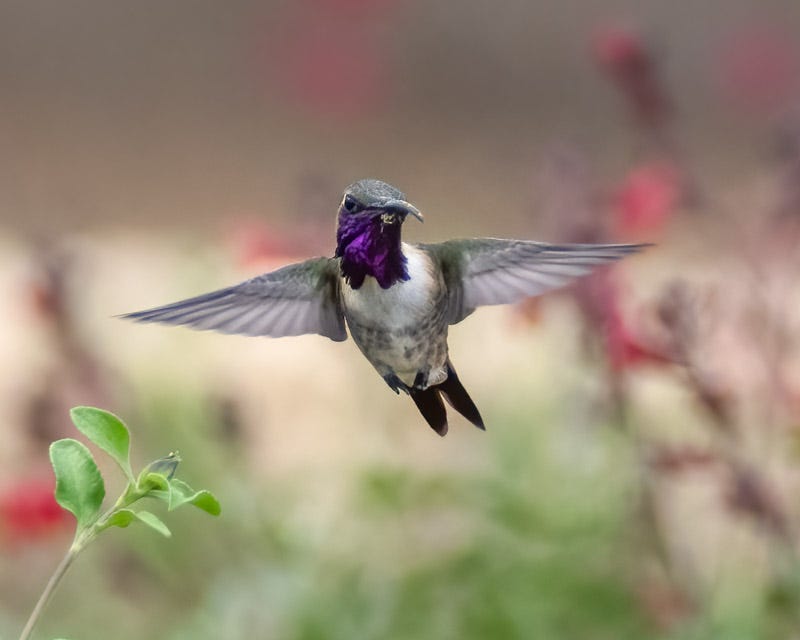A Visit to Ash Canyon Bird Sanctuary
More photos from Southern Arizona
Here are more photos from our weekend at Casa de San Pedro, at the SE corner of the Huachuca Mountains. The nearby Ash Canyon Bird Sanctuary has several water features on the grounds. I was sitting on a bench next to one, close enough that I felt I could reach out and touch the birds using it. They obviously were habituated to the human visitors. This Yellow-Rumped Warbler came over to take a bath.
There are two 'bird blinds' on the north side of the property. From there, you could see the many birds that came to the nearby feeders. This male Western Tanager was a brief visitor and likely a migrant. During breeding season in Arizona, the Western Tanagers are seen more commonly in upper mountain forests, particularly among conifers. The elevation at Ash Canyon is just a bit over 5000 feet
A male Black-headed Grosbeak patiently waited his turn at the suet cake while a Lesser Goldfinch dined. Black-headed Grosbeaks are songbirds with a large head and a very large beak.
Every time that I've visited Ash Canyon over the years I've seen a Bewick's Wren foraging for insects on the grounds. In the Tucson desert, we are familiar with Cactus Wrens, which are about 8" long. The Bewick's Wren is 5" long and sports a white eyebrow. It often holds its tail up, as it is doing in this picture.
The Casa de San Pedro sits next to the San Pedro River. We took a morning walk along the river which was still flowing late in April. A Cassin's Kingbird was hunting under the tall Cottonwoods that lined the river. Cassin's are another of the summering kingbirds and flycatchers to arrive in southern Arizona. Allaboutbirds.org describes them as featuring a "neat white throat that stands out against a stormy gray head and breast."
Birdnote talks about how Kingbirds, including the Cassin's, are fearless hunters: https://www.birdnote.org/listen/shows/kingbirds-steal-wasps
Ash Canyon is full of a wide variety of pollinator plants. These attract hummingbirds but also pollinators of all kinds. Carpenter Bees are large black bees that get their name from their habit of nesting in hollowed dried stems of yucca, sotol, etc, or abandoned tunnels left by wood-boring beetles.
Mexican Jays are common throughout the Sky Islands. One that came to the fountain was missing a lower portion of its bill. The bird looked healthy otherwise but it was startling to see it.
One hummingbird came in to take a bath at the birdbath. It let the water rush by its belly on this side of the fountain.
It moved to the other side. Perhaps the stream of water was not as strong on this side. Among other behaviors, at one point it lay down sideways and worked on cleaning the feathers on its head.
One bird that I was really hoping to get a good look at was the Lucifer Hummingbird. It was difficult shooting these birds in flight, as they rarely paused and their movements were not predictable. Lucifer Hummingbirds are small and have a bright purple gorget. They belong to a group of hummingbirds called "sheartails", named for their deeply forked and narrow tails.
I've got a few other nice shots to share of the Lucifer along with yet other photos from that weekend. And still, the Great Horned Owl photos continue to pile up!



